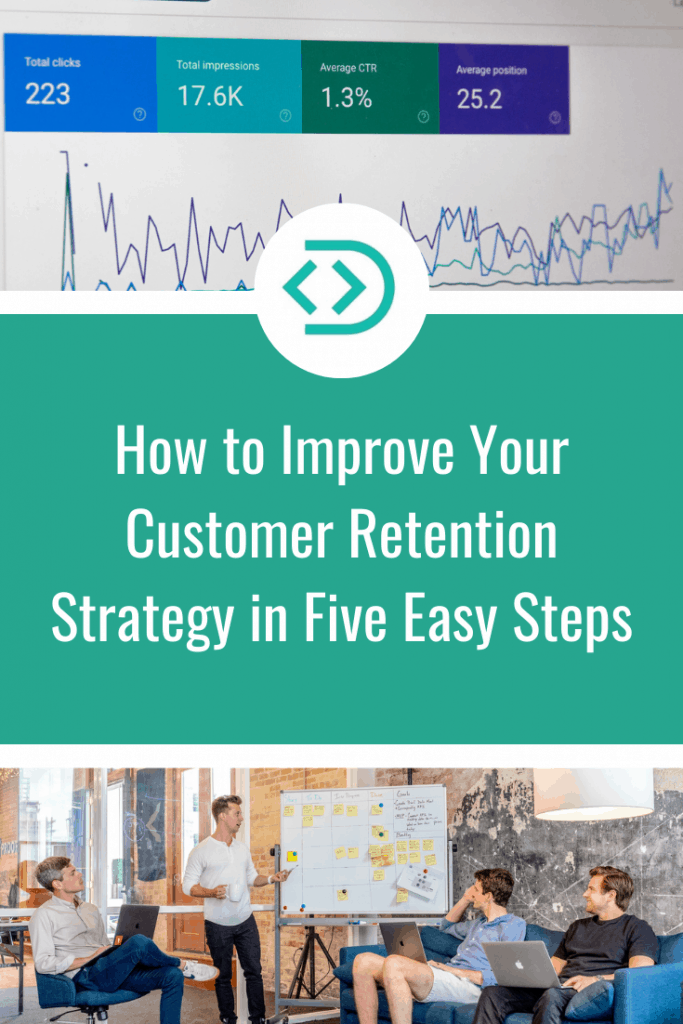If your business gains and loses customers at an equal pace, you’ll never see the growth you desire. To thrive as a company, you must keep loyal fans while reaching new ones. If you want to learn how to improve your customer retention strategy, then you should focus on customer happiness. This will help you create a strategy that helps you please both current clients and reach new leads effectively.
In one study, researchers found increasing customer retention by a mere 5% increased profits between 25% and 95%. Keeping your loyal customers happy impacts your bottom line.
Consumers would much rather stick with a brand they know. If you ensure the customer experience (CX) is positive, they’ll likely stay. People who already buy from you are also likely to spend more money in a single shopping trip.
What Are the Major Benefits of Customer Retention?
Although revamping your customer service policies to focus more on current customers may be a bit of extra work, there are clear pros to keeping the customers you have:
- Save money. It costs money to seek out new leads and develop a new relationship.
- More targeted campaigns. The better you know your clients, the more you can segment them and personalize marketing messages. Your customer relationship management (CRM) software can track their preferences and spit out analysis of what they’ve likely to buy in the future.
- Gain word-of-mouth promotion from happy patrons. People who love your brand will tell others, giving you free marketing and referrals.
- You can only grow by adding to your base. If you constantly lose customers and have to replace them, your company won’t grow but will remain stagnant.
Additionally, and perhaps most importantly, it provides an increased return on investment (ROI). The 80/20 rule shows that 80% of your profits come from 20% of your customers. Focusing on the few may result in higher revenue. The better your ROI, the healthier your cash flow is.
Now that you know how important customer retention is, you probably realize there are some steps you can take to improve yours. Here are five easy steps to help you improve your strategy today.
1. Audit Your Processes
Spend time looking at your customer service policies. Which ones seem to aggravate your current customers? How can you change them to up the satisfaction level and CX?
Look back at customers who haven’t ordered in a while. Why did they leave? You may want to reach out to them and have a frank conversation about what you can improve. Although many won’t return, you’ll learn what not to do in the future.
Look at each touchpoint in the customer journey. How do you onboard new customers so they feel comfortable with your brand? Do you reach out frequently? Use software to inform them when it’s time to reorder, or about new products they might be interested in.
Have employees sample the ordering process and look for holes in your customer service strategy. The more feedback you get, the more you’ll see where you have issues.
2. Build Relationships
Take the time to build relationships with your customers. Big clients should have a committed sales team to reach out frequently and assess their ongoing needs. If you serve business clients, their needs may also change as they grow and morph into a more established company.
Take the time to phone even your smallest accounts. Talk to them about how well you’re meeting their needs. Seek out solutions to any problems. Utilize powerful CRM software to remind you of when they need someone to reach out to them or to automate processes.
People are much more likely to be loyal to a brand making an effort to provide custom solutions. Even if they have a major complaint, they should know they can contact a real human and get a response and resolution quickly.
3. Get Emotional
Tap into your customers’ emotions. The world is very impersonal these days, and people want to connect on a deeper level. Whether you embrace causes your customers care about or simply address their pain points, know what makes them tick.
In a survey of 3,800 consumers of all ages, researchers found consumer loyalty is higher than ever. Around 26.4% reported having more loyalty to their favorite brands, while 60.2% stayed the same. However, the younger generation will also flee from your brand if you make decisions they dislike or provide poor service.
The most successful brands tend to understand their clients’ fears and concerns. They offered solutions during the global pandemic, such as adding curbside pickup, delivery, and online order options. Try to see things from your customers’ perspective and offer solutions that make their lives easier.
You could also tap into causes they care about as makes sense for your company. For example, if your typical buyer wants to reduce their carbon footprint, you can do the same by reducing energy usage and increasing recycling efforts.
Find the cause your company is passionate about and then see how it resonates with your customers. You may care about multiple issues. It’s okay to choose the one that helps your customers relate to you better. You can always embrace other causes later.
While some things are important, keep in mind that there are hot button, controversial issues that might drive some of your customer base away. It’s probably best to avoid religion and politics for example for business purposes. You can still support your favorite causes on your own time, but for the purpose of brand building, be aware that not everyone shares the same views about some topics.
4. Segment Your Customers
Perhaps you have fans from different demographics. You may serve both millennials and baby boomers. You might sell products for stay-at-home moms and working parents. Think about what makes each portion of your audience unique from a messaging standpoint. Separate them into groups.
Personalized messages resonate with customers more than generic ones. What makes sense for that segment? One might prefer clearance items, while another might want the newest arrivals. Cater your message to their preferences.
Customers want to feel like more than just another number. They want to know you care about their needs and truly get them. Customization is the best way to show that, but without segmentation, it becomes an impossible task.
5. Reach Out
Take the time to reach out to your customers. As mentioned earlier, you can connect on an emotional level when you understand their pain points better. Some of the most effective ways to reach out include email, social media, SMS and post cards.
However, you can also enlist your customers’ help in growing your brand and make them more likely to stick around. Ask if they’ll share your business with family and friends. Start a loyalty program and reward them for referrals. Host a contest and award the client with the most social media likes, for example.
Once they recommend your company to people they know, they’re more likely to remain your customer. After all, they’ve told others how great you are. They may even be more likely to overlook minor issues. They will probably reach out if there is an issue, so you’ll be aware more quickly and can fix whatever the problem is.
However, keep your customer service pledge in place. You want their expectations and happiness to remain high so they keep referring new people while staying with you. Do everything you can to offer your top clients a premiere service so they want to help you spread the word.
6. Ask for Feedback
Send out a survey or anonymous poll to your customers. They might feel uncomfortable telling you about problems they have with your products or services, but if they can tell you anonymously, they’ll share more.
Ask a series of questions to pinpoint areas you already feel are weaknesses. However, make sure you allow plenty of space for them to “add additional comments.” You may have problems with your customer service model you aren’t aware of. Be open to feedback on any topic imaginable.
In addition to asking your customers for feedback, talk to department heads and individual employees. What is keeping them from providing the best customer service imaginable? Let them submit ideas for new programs or ideas for training.
You should also have a mentor who is well-versed in business and growing a brand. What did they do to retain customers while adding new ones? What are the big mistakes they made that you can avoid? Set aside time each week to talk to your mentor about how to improve your leadership.
7. Refine Onboarding
How well do your customers understand your brand philosophies and how you can help them? Your onboarding process can make or break how loyal people are to your company.
Onboarding may be a little more complicated for retail establishments. However, you can still train your employees to share a bit and begin the relationship. One example of great onboarding is Lush. When you go into one of their stores, they greet you and make sure you know their products are natural and the causes they stand for.
Some of the process involves face-to-face interaction with a sales associate. Some involves cute signs they’ve placed throughout the store to indicate the benefits of their products.
Customer Retention is Your End Goal
Think about the brands you’ve used forever. Why do you stick with them? The key is usually consistent quality, customer service, and value. Offer the same types of things to your clients and you’ll develop a loyal following and growth over time.

About The Author
Eleanor Hecks is the Editor-in-Chief of Designerly Magazine, an online publication dedicated to providing in-depth content from the design and marketing industries. When she's not designing or writing code, you can find her exploring the outdoors with her husband and dog in their RV, burning calories at a local Zumba class, or curled up with a good book with her cats Gem and Cali.
You can find more of Eleanor's work at www.eleanorhecks.com.


